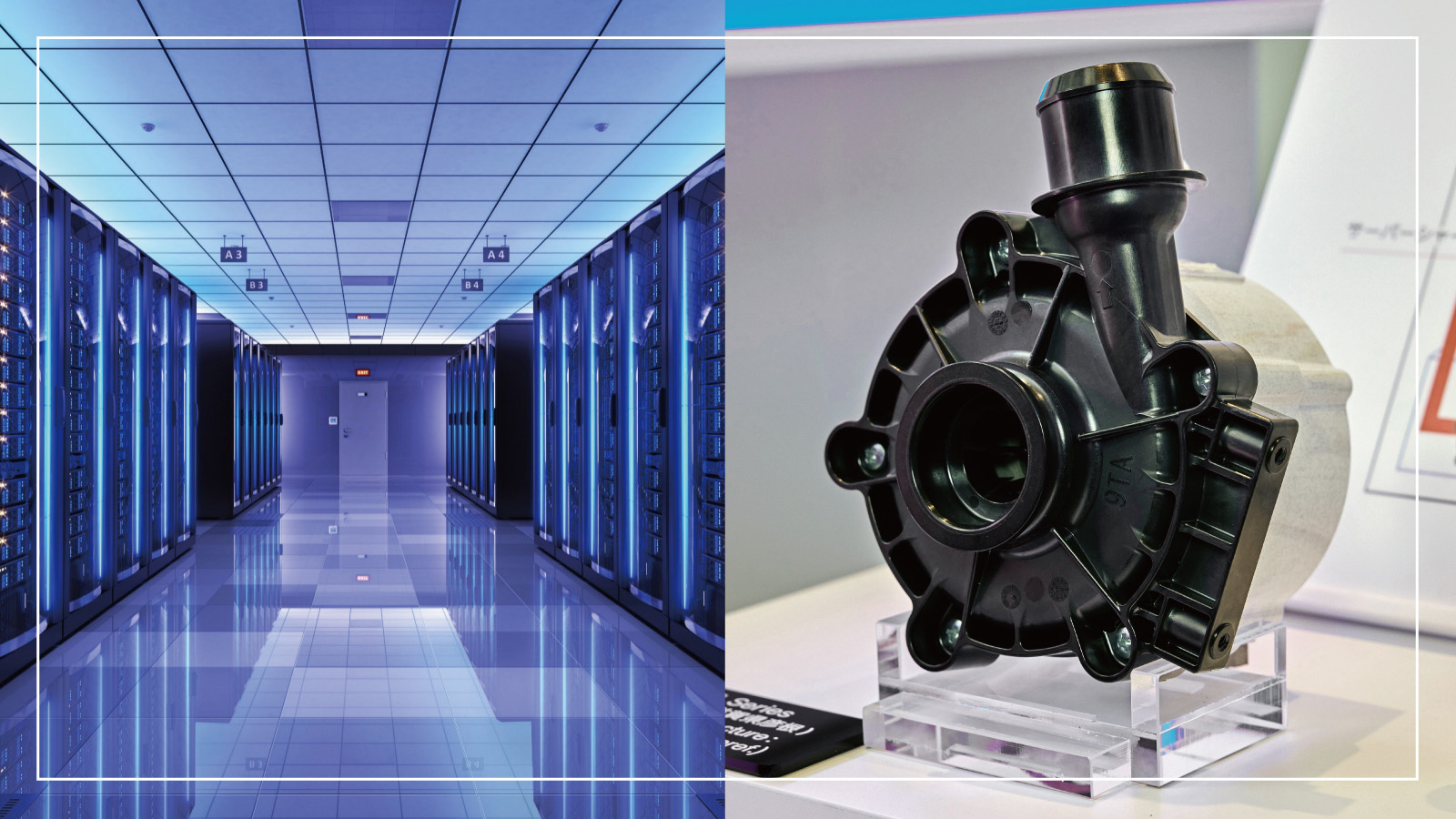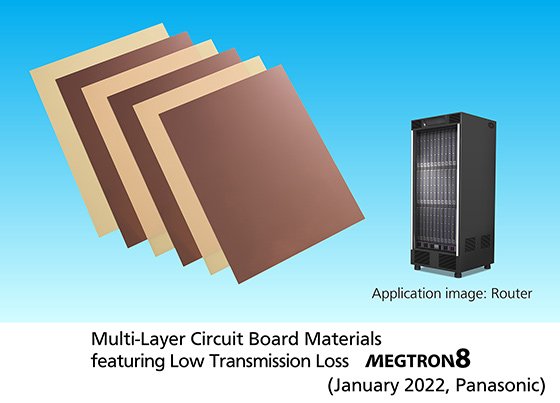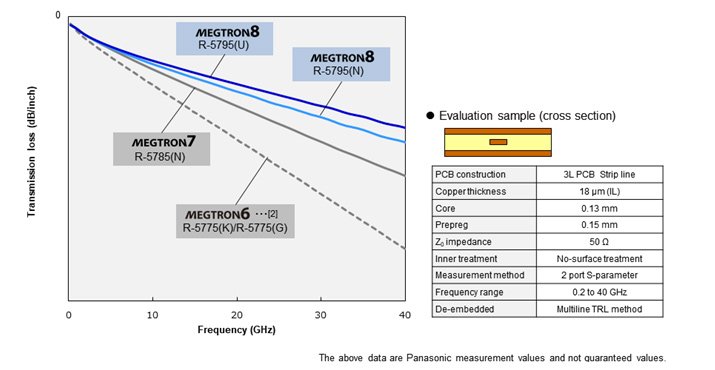
Nov 18, 2025
- Products & Solutions
- Stories
- Operating Company
(UPDATE) 20220803 The product website URL for "MEGTRON 8," a multilayer substrate material with ultra-low transmission loss and high heat resistance, has been added.
Jan 18, 2022
Products & Solutions / Press Releases
• The new materials support 800 Gigabit Ethernet used for next-generation high-speed communication technology.
• They have achieved the industry's lowest (*1) transmission loss.

Osaka, Japan - Panasonic Corporation announced today that its Industry Company has developed MEGTRON 8[1] Multi-Layer Circuit Board Materials Featuring Low Transmission Loss [2], designed for high-speed communication networking equipment such as routers and switches.
The worldwide deployment of the fifth-generation mobile communication system (5G) is fostering the trend of continuous social change toward the Internet of Everything (IoE) where all things will be connected through the Internet. The number of connected terminals and the volume of communication data is expected to increase significantly as IoE technology continues to evolve. In accordance with this trend, solutions for high-speed signal processing and increased power consumption have become major technical challenges.
High-speed communication networking equipment, the backbone of IoE technology, will now need to meet 800 GbE[3] (112 Gbps[4], PAM4[5]) targets, which are twice as fast as the current 400 GbE standards. As the electricity flowing through the conductors in printed circuit boards increases in speed and frequency, the transmission loss grows commensurately. This means new, high-performance circuit board materials with reduced transmission loss are required to ensure signal quality.
Panasonic leverages its proprietary resin design expertise and material compounding technologies to deliver both the excellent dielectric properties and the low transmission loss required for high-performance, high-layer-count circuit boards. Panasonic also incorporates both ultra-low dielectric dissipation factor glass cloth and low-profile copper foil[6] into MEGTRON 8.
Using these technologies, Panasonic has developed MEGTRON 8 Multi-Layer Circuit Board Materials featuring the Industry's Lowest (*1) Transmission Loss for this class of circuit board materials, thereby contributing to larger capacity and higher speed data communication. In addition, this product may reduce power consumption through lowering transmission loss (*2).

Routers, switches, optical transmission equipment, servers, AI servers, base stations, semiconductor test equipment, probe cards, etc.
Panasonic has achieved the industry's lowest transmission loss by using its proprietary resin design and material compounding technologies to enable excellent dielectric properties, as well as integrating ultra-low dielectric dissipation factor glass cloth and low-profile copper foil:
contributing to improvement in the signal processing performance of high-speed communication networking equipment. Using circuit board materials with low transmission loss improves current transmission efficiency, thus potentially reducing power lost to heat.

The company's proprietary resin design and material compounding technologies feature both a high glass transition temperature and high thermal decomposition temperature in addition to heat resistance and insulation reliability [7]. These properties ensure excellent reliability in high temperature environments, even for high-layer-count circuit boards with more than 20 layers -- such as those used in high-end servers and routers. This contributes to the stable operation of such equipment.
Differing from a fluoropolymer-based circuit board material using polytetrafluoroethylene (PTFE), a resin well known for its low transmission loss, MEGTRON 8 is made of a thermoset resin system. This means MEGTRON 8 has the same manufacturability and processability in standard circuit board processes as conventional materials offer.
<Parts No.> Laminate: R-5795(U), R-5795(N), Prepreg: R-5690(U), R-5690(N)

Panasonic Corporation Corporate PR Center
https://news.panasonic.com/global/contacts/
Electronic Materials Business Division, Industry Company, Panasonic Corporation
https://industrial.panasonic.com/cuif/ww/contact-us?field_contact_group=2343&field_contact_lineup=3249&ad=press20220118ww
https://www.panasonic.com/global/corporate/industry.html
https://industrial.panasonic.com/ww/products/pt/megtron/megtron8
Panasonic Corporation is a global leader developing innovative technologies and solutions for wide-ranging applications in the consumer electronics, housing, automotive, and B2B sectors. The company, which celebrated its 100th anniversary in 2018, operates 522 subsidiaries and 69 associated companies worldwide and reported consolidated net sales of 6,698.8 billion yen for the year ended March 31, 2021. Committed to pursuing new value through collaborative innovation, the company uses its technologies to create a better life and a better world for customers. Learn more about Panasonic: https://www.panasonic.com/global.
The content in this website is accurate at the time of publication but may be subject to change without notice.
Please note therefore that these documents may not always contain the most up-to-date information.
Please note that German, Spanish and Chinese versions are machine translations, so the quality and accuracy may vary.